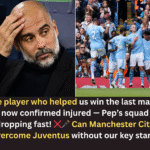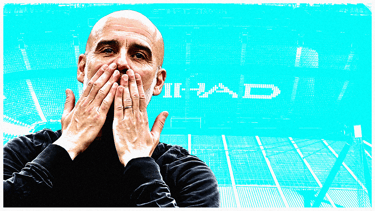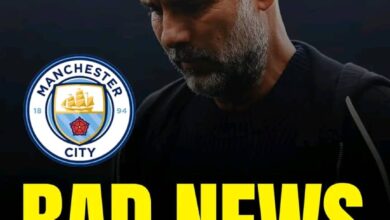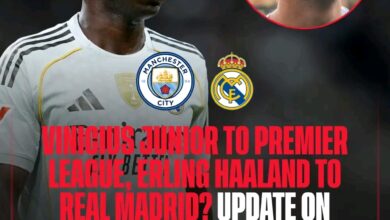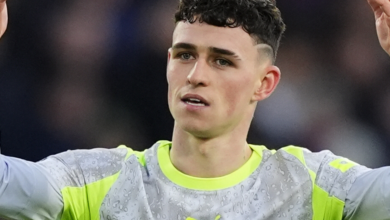Manchester City Confirms Signing of River Plate Midfielder Claudio Echeverri for £100M Transfer Fee
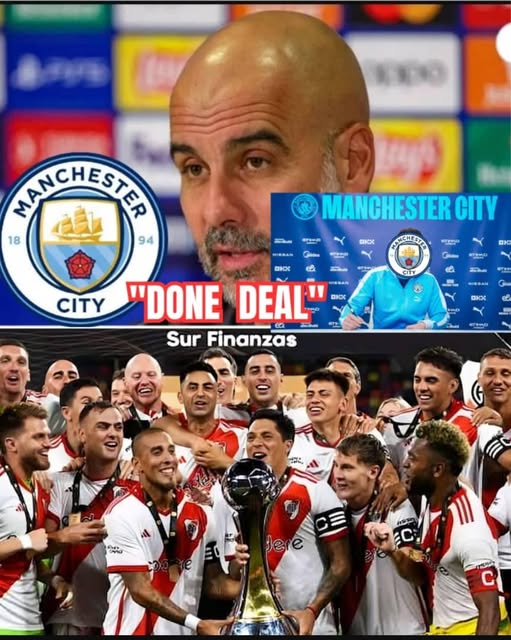
In a move that has sent shockwaves through the football world, Manchester City has officially confirmed the signing of 18-year-old Argentine midfielder Claudio Echeverri from River Plate for a staggering transfer fee of £100 million. The deal represents one of the most significant investments in youth talent in recent memory and underscores Manchester City’s continued commitment to securing the brightest prospects in world football.
The Deal Structure and Loan Arrangement
The transfer, which has been finalized this month, includes a unique arrangement that will see Echeverri remain at River Plate on loan for the entirety of 2024, with the young midfielder expected to join Pep Guardiola’s squad in January 2025. This loan-back arrangement mirrors a similar strategy employed by City with Julian Alvarez, who was acquired from the same Argentine club in January 2022 for £14 million and subsequently loaned back to River Plate for six months.
The parallels between the two transfers are striking, with both players being given the opportunity to continue their development in familiar surroundings before making the transition to English football. However, Echeverri’s loan period is significantly longer, reflecting both his younger age and Manchester City’s recognition that additional development time in South America could prove invaluable for his long-term prospects.
This extended loan arrangement demonstrates City’s sophisticated approach to talent acquisition, recognizing that immediate integration isn’t always the optimal path for young players, particularly those transitioning from South American football to the Premier League. The strategy allows Echeverri to continue his progression in an environment where he has already demonstrated exceptional ability, while also providing River Plate with additional time to benefit from his talents.
Echeverri’s Profile and Potential
At just 18 years of age, Claudio Echeverri has already established himself as one of South America’s most promising midfield talents. His technical ability, vision, and maturity on the ball have drawn comparisons to some of Argentina’s greatest midfield maestros, while his physical attributes suggest he possesses the tools necessary to adapt to the demands of European football.
Echeverri’s development at River Plate has been carefully monitored by City’s extensive scouting network, which has become increasingly sophisticated in identifying and evaluating young talent across South America. The midfielder’s performances in both domestic competition and youth international tournaments have consistently impressed observers, with many noting his exceptional decision-making ability and tactical awareness despite his young age.
The £100 million valuation placed on Echeverri reflects not only his current ability but also his tremendous potential for growth. Manchester City’s investment represents a calculated gamble on a player who many believe could become one of the defining midfielders of his generation. The fee also serves as a statement of intent from City, demonstrating their willingness to compete at the highest level of the transfer market for the most coveted young talents.
River Plate’s Perspective and Financial Realities
River Plate’s sports director, Enzo Francescoli, has been refreshingly candid about the circumstances surrounding Echeverri’s departure and the financial realities facing South American clubs in the modern football landscape. In recent interviews, Francescoli has acknowledged both the inevitability of losing such exceptional talents and the importance of maximizing the financial benefits for the club.
“He is very calm, I see him the same as last year,” Francescoli stated when discussing Echeverri’s demeanor during the transfer process. “He must undoubtedly be dealing with personal issues. But he’s a lovely boy, so he deserves it. He is doing quite well, staying grounded beyond what occurs to an eighteen-year-old. He and I had a conversation a few days ago. He’s fine, serene.”
Francescoli’s comments reveal the human side of what can often appear to be purely financial transactions. The sports director’s obvious affection for Echeverri and his recognition of the challenges facing any teenager navigating such a significant life change provide insight into River Plate’s approach to player development and their commitment to supporting their young talents even as they prepare to depart.
The director’s acknowledgment of fan frustration regarding the club’s inability to retain Echeverri speaks to the broader challenges facing South American football. “I recognise. People are impatient when they don’t understand how things work. The perfect world that was once thought to exist no longer exists,” he explained, highlighting the complex economic pressures that make it virtually impossible for even the most successful South American clubs to retain their brightest stars.
The Economics of South American Football
Francescoli’s comments provide valuable insight into the economic realities that shape modern South American football. His observation that “you must daily contend with the effects of globalisation” reflects the fundamental challenges facing clubs in the region as they compete against European giants with vastly superior financial resources.
The sports director’s analysis of the market dynamics is particularly illuminating: “These players—like Claudio—who surprise and thrill a lot of people are the ones who are inevitable. Markets that are farther away and others that are closer, such as Brazil, which has a stronger economy than ours and a more straightforward path in the economic realm.”
This assessment highlights the multi-layered nature of the challenge facing Argentine clubs, which must compete not only with European giants but also with Brazilian clubs that benefit from a stronger domestic economy. The result is an environment where even the most successful clubs like River Plate find it extremely difficult to retain their most promising talents.
The £100 million fee commanded by Echeverri represents both a vindication of River Plate’s development system and a reflection of the current market realities. As Francescoli noted, “The sale has excellent financial results. Though he is only eighteen, we are aware of the conditions he has. It is not possible to impose a 100 million dollar clause on players as you would with high-paying players in Europe. It’s not really that simple.”
Manchester City’s South American Strategy
The acquisition of Echeverri represents the latest phase in Manchester City’s increasingly sophisticated approach to the South American market. The club’s successful integration of players like Julian Alvarez has demonstrated their ability to identify and develop talent from the region, while their investment in scouting infrastructure has positioned them as one of the most active European clubs in South American football.
City’s approach differs significantly from many of their European competitors in its emphasis on long-term development rather than immediate impact. The willingness to invest £100 million in an 18-year-old and then loan him back for a full year demonstrates a level of patience and strategic thinking that reflects the club’s broader philosophy under the ownership of the City Football Group.
The parallels with the Alvarez transfer are instructive in understanding City’s methodology. Alvarez’s successful adaptation to English football, despite initial concerns about his ability to adjust to the Premier League’s physical demands, has validated the club’s approach to South American recruitment. His performances have not only justified the initial investment but have also enhanced City’s reputation among young South American players and their representatives.
This reputation is crucial in a competitive market where the biggest European clubs are increasingly focused on South American talent. City’s ability to offer not just financial incentives but also a clear pathway to first-team football and a track record of successful integration gives them a significant advantage in recruitment battles.
The Wider Context of Youth Investment
Echeverri’s transfer fee places him among the most expensive teenage signings in football history, reflecting the premium now placed on exceptional young talent. The £100 million investment represents more than just an acquisition; it’s a statement about the future direction of football economics and the increasing importance of securing the brightest prospects before they reach their peak value.
The deal also highlights the evolution of Manchester City as a global football powerhouse. The club’s willingness to invest such significant sums in youth talent demonstrates their confidence in their development systems and their commitment to remaining competitive at the highest level for years to come. This approach contrasts with clubs that focus primarily on acquiring established stars, suggesting a more sustainable model for long-term success.
From a broader industry perspective, the transfer reinforces trends toward earlier identification and acquisition of talent. The days when clubs could wait for players to establish themselves in European competition before making their move are increasingly rare, as the competition for the best young players intensifies and transfer fees continue to escalate.
Technical Analysis and Playing Style
While specific details about Echeverri’s playing style and technical attributes are closely guarded by both clubs, reports suggest that the young midfielder possesses the versatility and technical sophistication that Pep Guardiola values in his players. His ability to operate in multiple midfield positions, combined with his strong technical foundation and tactical intelligence, suggests he could adapt well to City’s possession-based system.
The midfielder’s development at River Plate has been carefully managed, with the club’s coaching staff focusing on developing his understanding of the game’s tactical nuances while maintaining his natural creativity and flair. This balanced approach to development is one of the reasons why River Plate has become such a successful breeding ground for international talent.
Echeverri’s physical attributes also suggest he possesses the tools necessary to adapt to the Premier League’s demands. His combination of pace, strength, and technical ability provides a foundation that City’s coaching staff can build upon, while his youth means there is considerable scope for further physical and tactical development.
The Role of Representation and Negotiation
The successful completion of such a complex transfer involving multiple parties across different continents required sophisticated negotiation and representation. Echeverri’s representatives played a crucial role in structuring a deal that satisfied all parties, balancing the player’s desire for career advancement with River Plate’s financial needs and Manchester City’s long-term planning.
Francescoli’s comments about the smooth nature of the negotiations highlight the importance of professional representation in modern football transfers. “The boy’s representation, City, who had the option to wait six months to accept him, and everything else have all gone smoothly,” he noted, suggesting that all parties approached the negotiations with realistic expectations and a commitment to finding mutually beneficial solutions.
The involvement of experienced agents and advisors is particularly important for young players making such significant career transitions. The emotional and practical challenges of moving from South America to Europe at such a young age require careful management, and the quality of representation can make a significant difference in how successfully players adapt to their new environments.
Future Implications and Expectations
The completion of Echeverri’s transfer sets several important precedents for future dealings between European and South American clubs. The £100 million fee establishes a new benchmark for teenage talent from the region, while the loan-back arrangement provides a template for deals that benefit all parties involved.
For Manchester City, the investment represents both an opportunity and a challenge. The club’s track record with young South American players provides confidence, but the pressure associated with such a significant investment will inevitably create additional scrutiny of Echeverri’s development and eventual integration into the first team.
The transfer also raises questions about the sustainability of such investment levels in youth talent. While the potential returns from a successful development story are enormous, the risks associated with teenage signings remain significant, and not all high-profile youth acquisitions fulfill their early promise.
Conclusion
The confirmation of Claudio Echeverri’s transfer to Manchester City for £100 million represents one of the most significant youth acquisitions in recent football history. The deal reflects the evolution of the modern transfer market, the increasing importance of South American talent, and Manchester City’s continued commitment to building for the future while competing at the highest level.
The carefully structured nature of the transfer, with its extended loan-back arrangement, demonstrates a sophisticated understanding of player development and the importance of managing young talent’s transition to European football. River Plate’s candid assessment of the economic realities facing South American clubs provides valuable context for understanding why such transfers have become inevitable.
As Echeverri prepares to spend his final year at River Plate before joining Manchester City, the football world will be watching closely to see whether he can justify the enormous investment and continue the successful tradition of Argentine players making their mark in English football. The stakes are high, but the potential rewards – both for the player and his new club – make this one of the most intriguing transfer stories of recent years.
The deal ultimately represents more than just a transfer; it’s a statement about the future of football economics, the global nature of modern talent identification, and the increasing importance of strategic long-term planning in building successful football clubs. As the industry continues to evolve, transfers like Echeverri’s may well become the new standard for how the world’s biggest clubs compete for the most promising young talent.

